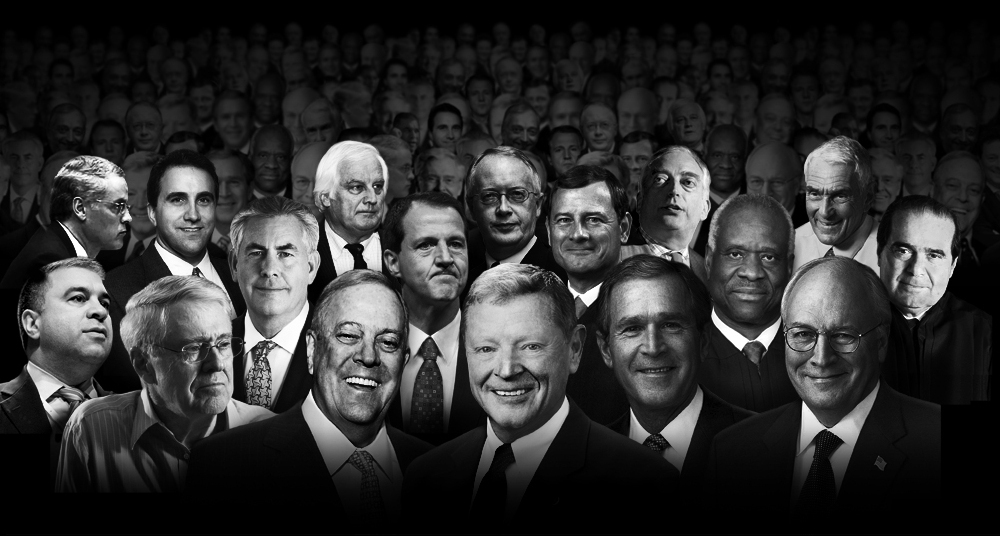George W. Bush served as the 43rd President of the United States from 2001-2009. Prior to that, Bush was the Governor of Texas from 1994-1999.
Since the 1920s the Bush family has made its living from oil; so it comes as no surprise that George W. Bush's presidency was filled with pro-oil industry policies and the rejection or avoidance of major environment policies.
After the oil industry pumped $2.8 million into his 2000 campaign, the industry's highest contribution to any candidate in the election, Bush filled key cabinet positions with individuals with industry ties. Donald Evans, his first Secretary of Commerce was the CEO of the oil company Tom Brown, Inc.; National Security Advisor and later Secretary of State Condoleezza Rice worked for Chevron for ten years; Defense Secretary Donald Rumsfeld had multi-million dollar investments in energy companies upon his appointment. Finally, Bush's running mate, Dick Cheney was the CEO of Haliburton for five years prior to moving into the White House.
Even more, the Bush administration was littered with consultants from the American Enterprise Institute, an oil industry funded think tank. These consultants helped shape domestic policy, including key environment legislation.
Through his administration, George W. Bush not only directly supported the fossil fuel industry through increased subsidies and drilling permits, but also through his pro-industry environmental policies and his negligence around climate science. The Natural Resources Defence Council has put together a fantastic timeline outlining Bush's "dirty" environmental legacy.
Here are some highlights:
- Within his first 100 days in office, Bush reneged on a campaign promise to regulate emissions from coal-fired power plants and refused to ratify the Kyoto Accord, a global climate change treaty.
- His administration persistently tried to water down the Clean Air Act.
- In 2001, Bush declared carbon dioxide was not a "pollutant" and, therefore, CO2 emissions would not be covered under the Clean Air Act. In 2007, the Supreme Court ruled that carbon dioxide meets the legal definition of a pollutant.
- In 2003, the administration proposed the Clear Skies plan to amend the Clean Air Act. Research showed this plan would allow 42 million more tons of pollution than the Clean Air Act and increase coal use by 79 million tons by 2020. The Clear Skies plan was not passed by Congress.
- In 2003, the EPA weakened a key program under the Clean Air Act which allowed thousands of old power plants to emit more pollution. The federal appeals court blocked this move later that year.
- In 2002, the White House disregarded a report completed by the EPA stating the U.S. would be seriously affected by climate change in the next few decades. The president's spokesman said, "There is considerable uncertainty -- that's in this recent report -- relating to the science of climate change."
- In 2003, Philip Cooney, Chief of Staff of the White House Council on Environmental Quality, resigns in the wake of a scandal in which he purposely edited scientific documents to create an air of doubt in regard to climate science.
- In 2006, top NASA climate scientist, James Hansen publicly charged the administration with muzzling scientists from discussing the dangers of climate change with the public.
Watch the movie. Then take action. Expose the Bastards. Demand the U.S. Congress investigate the lies and manipulation.




